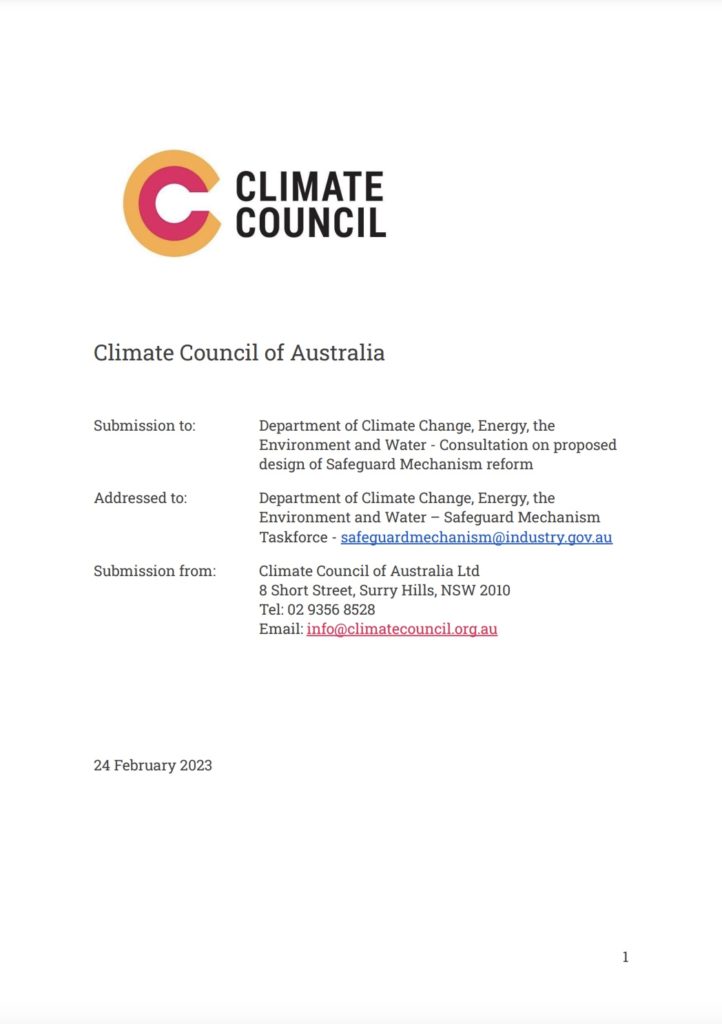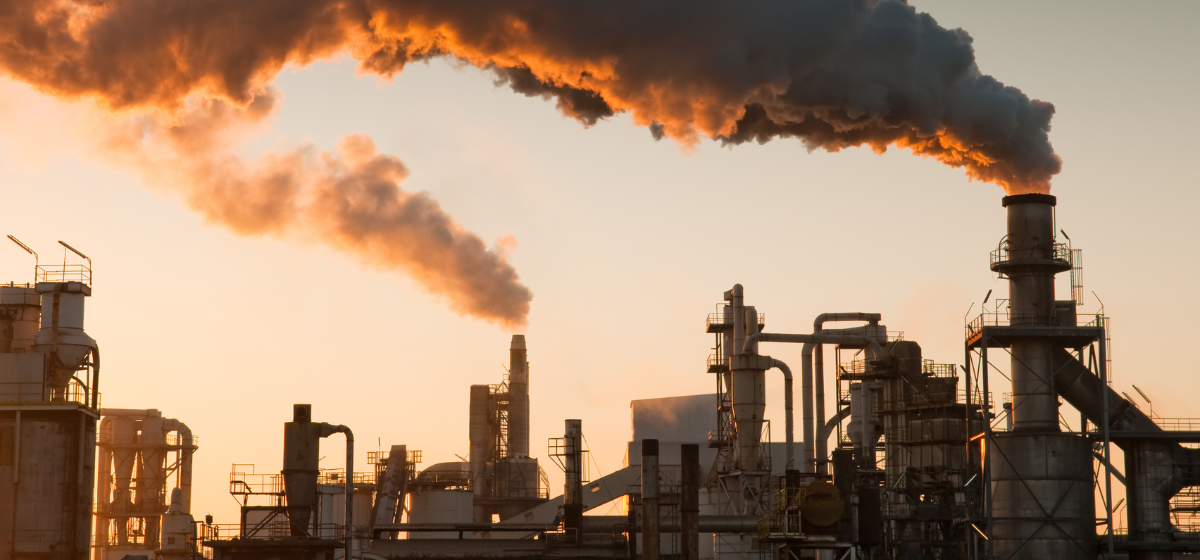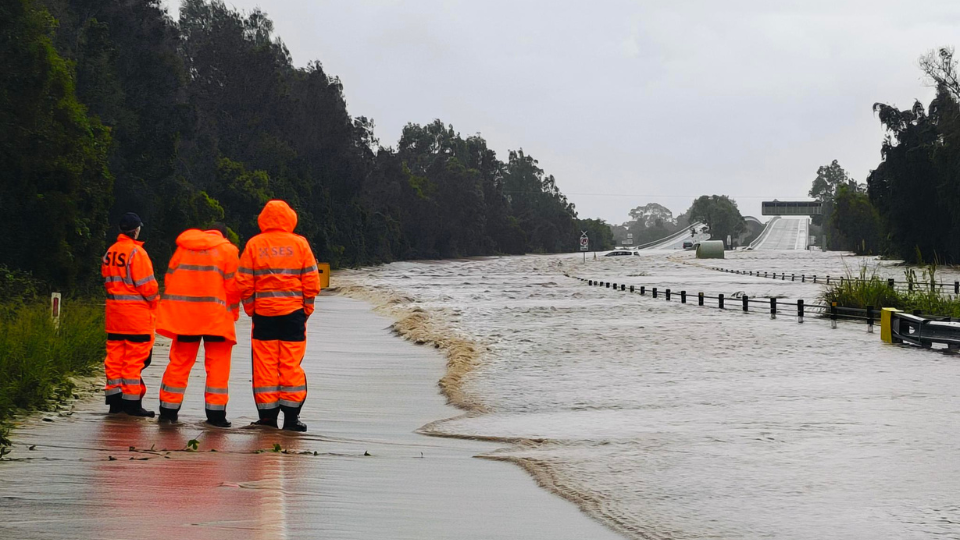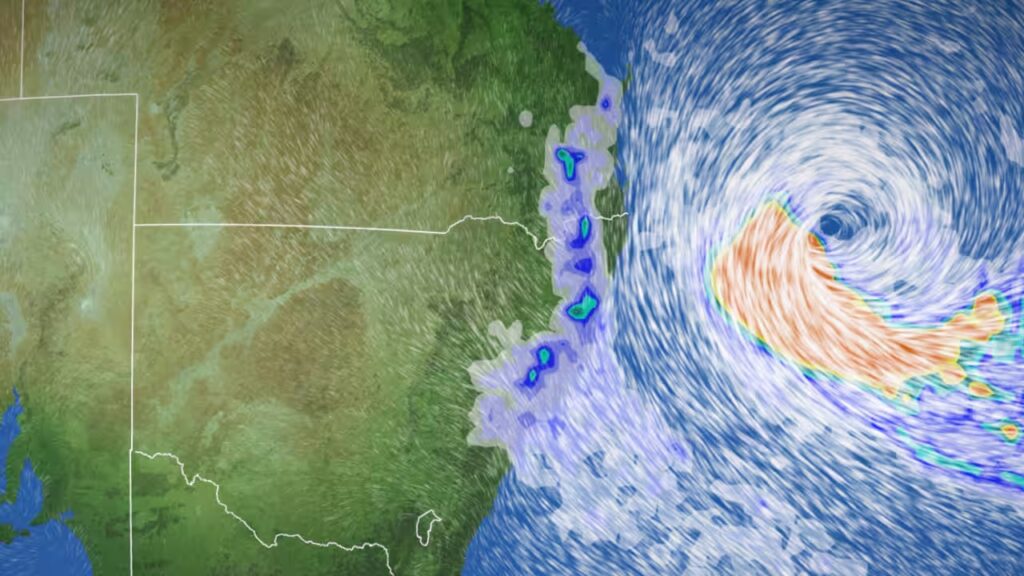Note: This page was developed in 2023, the last time the Safeguard Mechanism was reformed. A number of our recommended improvements were adopted at the time. The mechanism will be reviewed again in 2026, and Climate Council will continue to advocate for these essential improvements to be made.
Strengthening the Safeguard Mechanism could be an important step in driving down harmful carbon pollution from Australia’s biggest emitters, and incentivising key industries to transform so they can thrive in a net zero world. Climate Council welcomes the Australian Government prioritising this work early in its first Parliamentary term and encourages it to deliver the strongest possible reform. Our comments throughout this submission are intended to emphasise where the proposed settings can be further strengthened to ensure the reforms work as intended and deliver the deep, genuine reductions in harmful carbon pollution Australia needs now.
The Climate Council’s recommendations are summarised below; further discussion and supporting data on each is outlined through this submission.
Recommendation 1
Climate Council recommends the final Safeguard Mechanism settings require covered facilities to collectively achieve a 43 percent reduction in emissions by 2030 – in line with Australia’s national emissions reduction target. This will ensure that our biggest industrial emitters genuinely pull their weight in the shared national effort to rapidly cut emissions this decade.
The proposed carbon budget of 1,233 million tonnes CO2e emissions between 2021 and 2030 should be set as an absolute cap on scheme emissions, fixed in legislation or regulation.
Recommendation 2
Climate Council recommends the final Safeguard Mechanism settings explicitly establish a carbon mitigation hierarchy, whereby facilities must demonstrate genuine efforts to avoid and reduce emissions before relying on credits or offsets.
Within this hierarchy, we further recommend that Safeguard Mechanism facilities be required to use any available Safeguard Mechanism Credits (created within the scheme) to account for their emissions above baseline, before using Australian Carbon Credit Units (created through other methods) outside the scheme.
Corporations relying on offsets and credits to meet their Safeguard Mechanism baselines should be required to transparently report on the type and volume of each used, for each compliance year. This will provide valuable data for ongoing assessment of the role of offsets and credits in the scheme, and ensure that companies are accountable to their shareholders and the Australian community for the genuineness of their emissions reduction efforts.
Recommendation 3
Climate Council recommends use of offsets be progressively phased down following an initial period to enable business planning and investment. The Australian Government should outline a clear pathway for progressively declining offset use as part of the final scheme settings commencing on 1 July.
Recommendation 4
Climate Council recommends public funding provided to Safeguard Mechanism facilities through the Powering the Regions Fund should only be used to support genuine business transformation to decarbonise operations. The funding rules should explicitly state that the purchase of ACCUs is not eligible expenditure. Companies receiving public funds should be required to make a legally-binding commitment that these will not be used for this purpose as part of the grant terms.
Recommendation 5
Climate Council recommends the Australian Government remove ‘adapted for the Australian context’ from the final scheme settings for new entrants, and provide clear, specific guidance on what constitutes international best practice for each of the sectors represented within the Safeguard Mechanism as part of the final scheme settings.
Recommendation 6
Climate Council recommends any new or expanded project which would meet the threshold for entry to the Safeguard Mechanism be required to be assessed under a strengthened Environment Protection, Biodiversity Conservation Act 1999. A pause should be placed on any new or significantly expanded projects of this scale entering the Safeguard Mechanism until the government’s in-train reforms to the EPBC Act are in place.
Recommendation 7
Climate Council does not support new fossil fuel facilities entering the Safeguard Mechanism. International expert advice and the science is clear that new fossil fuel projects are inconsistent with holding global warming as close as possible to 1.5 degrees.
However, if any new or significantly expanded fossil fuel facilities do proceed, Climate Council recommends these be made ineligible for any forms of government support available to existing Safeguard Mechanism facilities. This includes making such facilities ineligible for funding under the Safeguard Transformation Scheme within the Powering the Regions Fund, and ensuring they are not able to access the proposed trade exposed baseline adjustment mechanism.
These steps will ensure that all public support available through the Safeguard Mechanism is directed to key national industries with a long-term future in a decarbonising world.
Recommendation 8
Climate Council recommends that access to the proposed trade exposed baseline adjustment arrangements should be tightly restricted. Access to these arrangements should not be expanded to a wider segment of facilities or industries within the Safeguard Mechanism as part of the final scheme settings. In particular, existing fossil fuel facilities within the mechanism should never be eligible for reduced baseline decline rates under these arrangements.
Climate Council recommends exploration of carbon border adjustment measures for Australia be pursued as a priority in parallel with reform of the Safeguard Mechanism.
Recommendation 9
Climate Council recommends the Australian Government deliver a major package of initiatives and investment explicitly aimed at developing Australian green export industries to replace exported fossil fuels over time, in parallel with reform of the Safeguard Mechanism. The size and scope of this package should reflect the once-in-a-century opportunity currently in front of Australia to become the world’s supplier of choice for clean energy and green manufactured goods.











